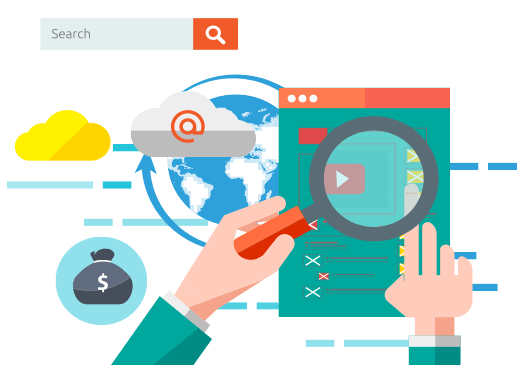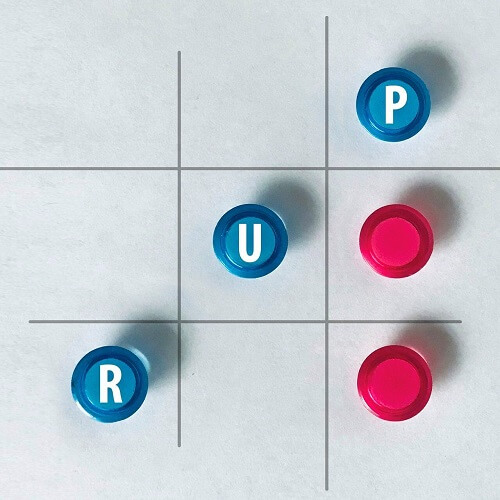What is Neuromarketing? What are the best strategies and techniques used by companies? Read the complete guide and find an opportunity to optimize your business online.
Index
- What is Neuromarketing?
- How does Neuromarketing work?
- How do companies use Neuromarketing?
- What are the best Neuromarketing techniques?
- What are the best Neuromarketing strategies?
- Examples of Neuromarketing campaigns and real business cases
- What is emotional marketing?
- Which discipline merges Neuromarketing within it?
- Conclusions
- FAQ
Need help managing and improving your online reputation?
60% of users say they don’t trust people or businesses who receive negative comments or reviews
What is Neuromarketing?
Neuromarketing is a discipline that investigates the most effective forms of communication to influence a consumer’s decision-making processes.
Anyone who has a business must worry about having a good corporate reputation.
It means applying a series of strategies that aim to maintain and improve the company image; on the other hand, they increase its turnover.
In this context, marketing plays a fundamental role.
Although they have an excellent response to customers, traditional marketing strategies evolve, including analyzing consumer needs and emotions.
Thus was born neuromarketing, which combines neuroscientific knowledge with marketing.
Its purpose is to analyze the irrational processes of users before, during, and after the purchase of a service.
On the other hand, the ultimate goal is to determine their emotional involvement.
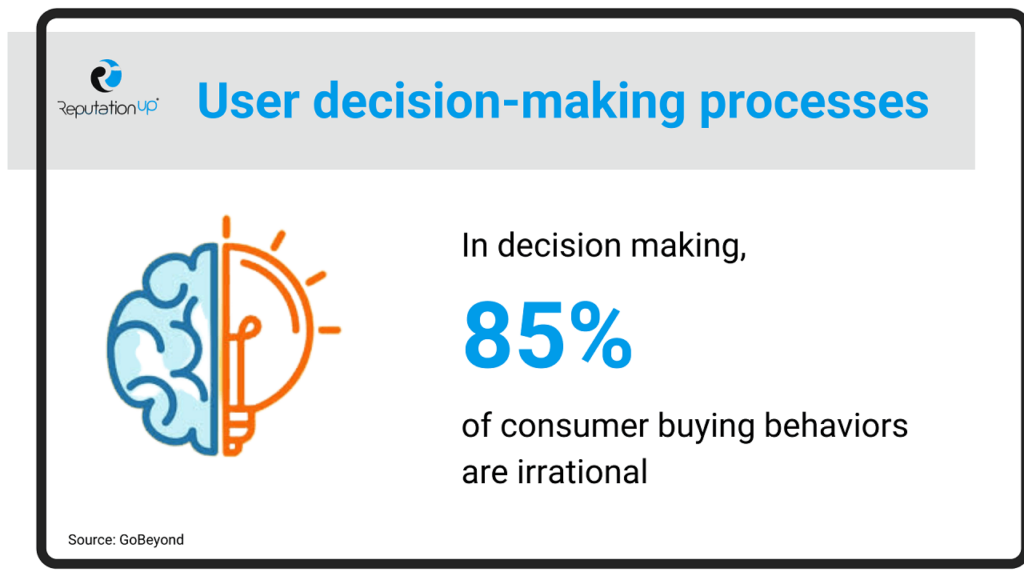
You must consider that traditional market research analyzes the rational part of consumers’ decision-making processes.
These correspond to only 15% of the operations, while the remaining 85% of purchasing behaviors are unaware.
Analyzing what lies behind this percentage makes the difference to your company’s success.
What does Neuromarketing mean?
To get a first understanding of neuromarketing, we refer to the Harward Business Review, which defines it as:
“The measurement of physiological and neural signals to gain insight into customers’ motivations, preferences, and decisions, which can help inform creative advertising, product development, pricing, and other marketing areas.”
The term derives from the union of the Greek prefix neuro, which concerns the nervous system and marketing in the generic meaning of sales.
Neuromarketing researchers analyze which brain areas are activated in response to a particular stimulus.
This can be caused by the colors of an advertisement, or by the graphics of a website, for example.
Simply put, it’s about applying neuroscientific knowledge and practices in the marketing industry.
How is Neuromarketing born?
Neuromarketing arises from understanding the emotions that bind a consumer to a brand.
This approach to the consumer was created to join traditional marketing strategies and not replace them.
Each customer has an opinion on a brand or a single product.
As the Statista statistics stand out, 36.4% of consumers consult between 1 and 3 reviews before purchasing.
These data represent an increase compared to 2019.
For their part, 31% prefer to consult between four and six opinions.
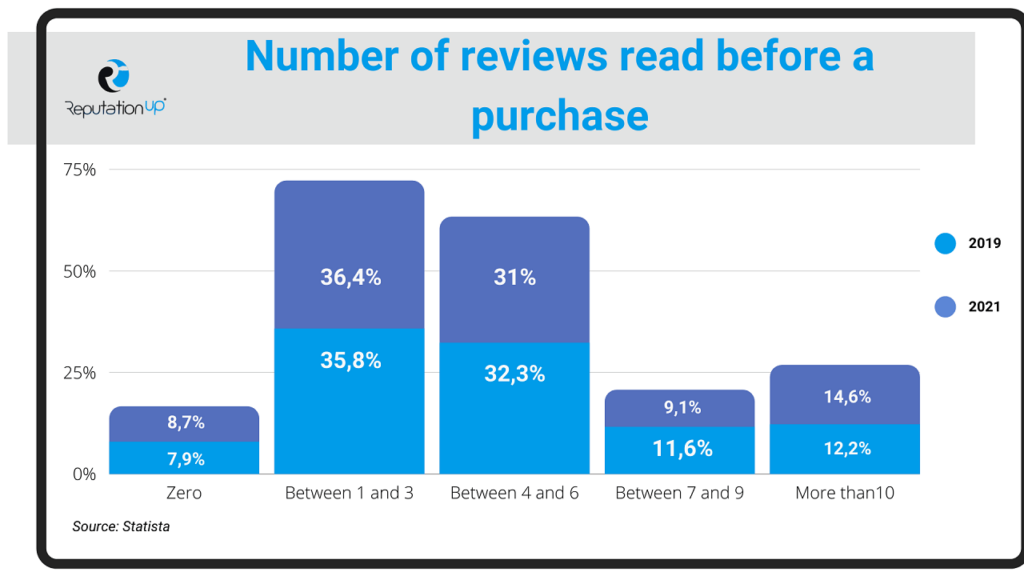
One of the options available to the brand owner is to eliminate negative reviews.
However, there is an even more effective way to understand the potential customer’s reactions to the new marketed proposals.
In this way, he will be able to identify a creative plan that can meet the needs of the future consumer.
This is the goal with which neuromarketing techniques are born, to understand customers’ behavior towards a service or brand.
To do it, experts examine the unconscious processes occurring in customers’ minds; likewise, they observe how they affect their purchase decision or emotional engagement with the brand.
When was Neuromarketing born?
Neuromarketing was formally born in 2002 by Ale Smidts, Professor of Marketing Research at the Rotterdam School of Management.
However, the first experiment in neuromarketing history dates back to the early 2000s.
Read Montague, a neuroscientist at the Virginia Tech Carillon Research Institute conducts a study on the brand identity of Pepsi and Coca-Cola.
The scientist divided the study participants into two groups and made them drink the two drinks in identical glasses; only the first group did not know what they were drinking.
The goal was to understand how users liked it, not only for the product itself but also for the brand’s perception.
The result? The first group, unfamiliar with the soda brand, liked Pepsi the most; in the second, the brand’s perception over the product itself prevailed, and therefore preferred Coca-Cola.
Do you want to spy on your competitors and their strategies?
Access the RepUP Monitoring Tool platform and find out how to beat the competition.
How does Neuromarketing work?
The example shown above demonstrates how important a solid brand protection campaign is for a brand.
Neuromarketing teaches us that you must offer a qualitatively good product and know how to sell its image.
This is why it is essential to rely on the skills of a specialized company such as ReputationUP, which can provide you with a complete reputation management service.
You should ask yourself: why did the consumer choose that product?
You must know that consumer behavior is partly predictable, and it is possible to monitor their stimuli in real-time for the purchase process.
Thanks to marketing techniques related to neuroscience, it is possible to plan an efficient strategy to maximize your sales.
We cite Paul Zak’s research at Claremont Graduate University in California to give a concrete example.
The researcher looked at oxytocin, a brain neurotransmitter known as the love hormone.
Zak noted that this hormone builds trust in a product or brand and thus helps increase sales.
“People treated with oxytocin donated 56 percent more money to causes presented in public service announcements. […] also reported that the advertisements made them feel more empathetic.”
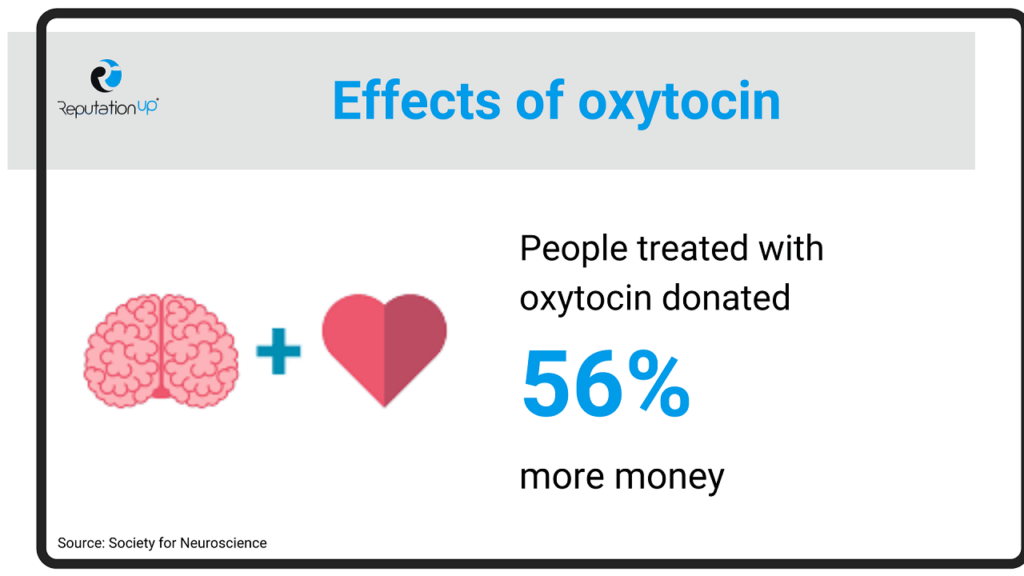
It is about using persuasion techniques that exploit the “weak points” of the human psyche.
Specifically, neuromarketing acts on three aspects of the consumer’s brain:
- Caution;
- Emotion;
- Memorization.
This system can be applied to any production area, information or sales.
How does fMRI work?
The acronym fMRI stands for functional magnetic resonance.
It is a technique used in medicine and capable of investigating the anatomy or functioning of the brain.
Its application in neuromarketing aims to detect which brain areas are activated following the solicitation of a stimulus.
The problem with fMRI is that it is costly.
However, compared to other instruments, it allows a very high level of precision.
Through fMRI, it is possible, for example, to demonstrate how the inclusion of certain scenes or colors in advertisements is effective in encouraging the purchase.
What does neuroscience study?
The American neurophysiologist Francis O. Schmitt coined the term neuroscience.
To better understand what it is, we use Cambridge Dictionary’s definition:
“The scientific study of the nervous system and the brain.”
To simplify, therefore, neuroscience deals with the scientific study of the nervous system from all points of view.
When do mirror neurons activate?
Mirror neurons are a central concept behind neuromarketing, essential to understanding how it works.
As we can read in the article published by the scientific journal Nature, mirror neurons:
“Are a class of neuron that modulate their activity both when an individual executes a specific motor act and when they observe the same or similar act performed by another individual.”
According to what has been said so far, the activation of mirror neurons determines a response to a stimulus.
It means that the reaction allows us to understand whether or not there is an appreciation for a product or brand.
How do companies use Neuromarketing?
The value of neuromarketing has increased as companies have shifted their product sales to the Internet.
The prerequisite for being competitive is having a positive online reputation.
On the other hand, neuromarketing will help your company place itself on the market.
A study by Mordor Intelligence indicates that the global neuromarketing market was valued at $ 1,158.37 million in 2020, with an estimation of $ 1,896 million in 2026.
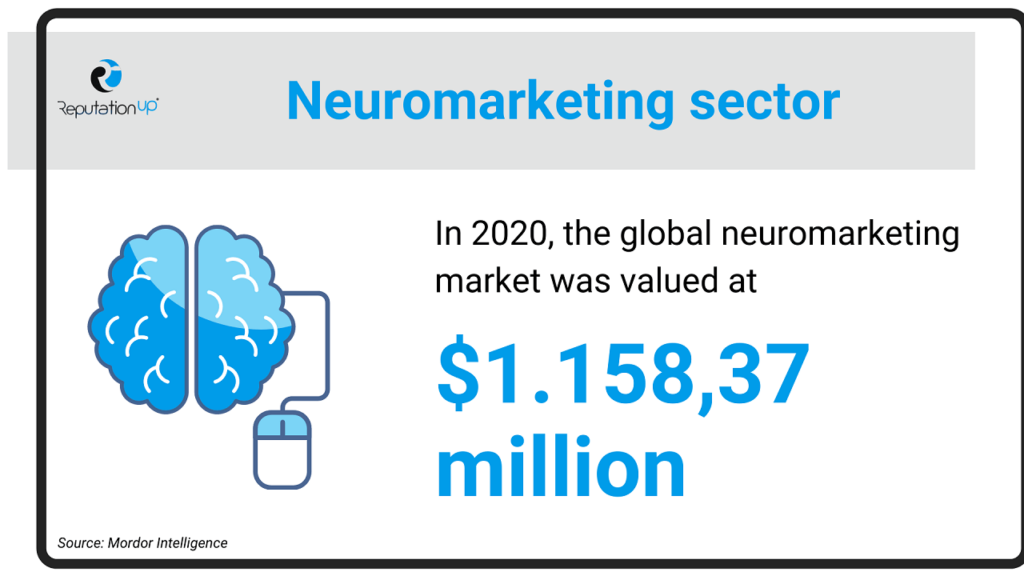
The following are the areas in which companies already use neuromarketing:
- Branding activities (neurobranding):
Of the new products placed on the market, only 1% are successful and remain on sale.
Therefore, this activity is essential because it allows you to create a recognizable brand identity; moreover, it is capable of intercepting the wishes and needs of the customer. - Product design:
Company website and product design and packaging are your business cards.
Making choices with a view to neuromarketing means that the actual perceptual data of customers will govern creative activity. - Customer decision making process:
Neuromarketing allows us to understand customers’ decision-making process and acts to influence their choices.
Knowing the customer experience in depth is one of the priorities for a correct application of neuroscience to marketing. - Retail:
Harness the full potential of neuromarketing to organize spaces to attract customers and provide them with the best possible shopping experience.
It aims to stimulate irrationality and emotionality to prolong the stay in the shop and, consequently, the shopping. - Experience and online monitoring:
The neuromarketing application is valid both offline and online.
Build social networks and corporate sites to facilitate and encourage the purchase.
Likewise, knowing about reputation monitoring is a significant first step to getting a feel for your brand‘s online situation.
How to create a Neuromarketing campaign?
We said that before starting a neuromarketing campaign, you need to know your online reputation‘s status.
If you want to know how the web perceives your personal and corporate brand, ReputationUP offers you innovative software.
We are talking about the Reputation Score, which combines elements of web analysis and Online Reputation Management to attribute the reputational value and the risk index connected to the entity.
Once this is done, you can begin to consider the main elements of a neuromarketing campaign:
- Know your audience on a deep level: determine specific buyer persona and establish an emotional connection with them;
- Tell a story: develop a narrative that users can empathize with, learn from or draw inspiration from;
- Study design: colors, music, geometric shapes are, in addition to words, all aspects to be taken into consideration when creating a product or deciding to offer a service; the form is as important as the substance;
- Make your audience heard: a survey conducted by Salesforce shows that 66% of consumers feel treated only as a number; the same percentage expect companies to understand what their customers need.
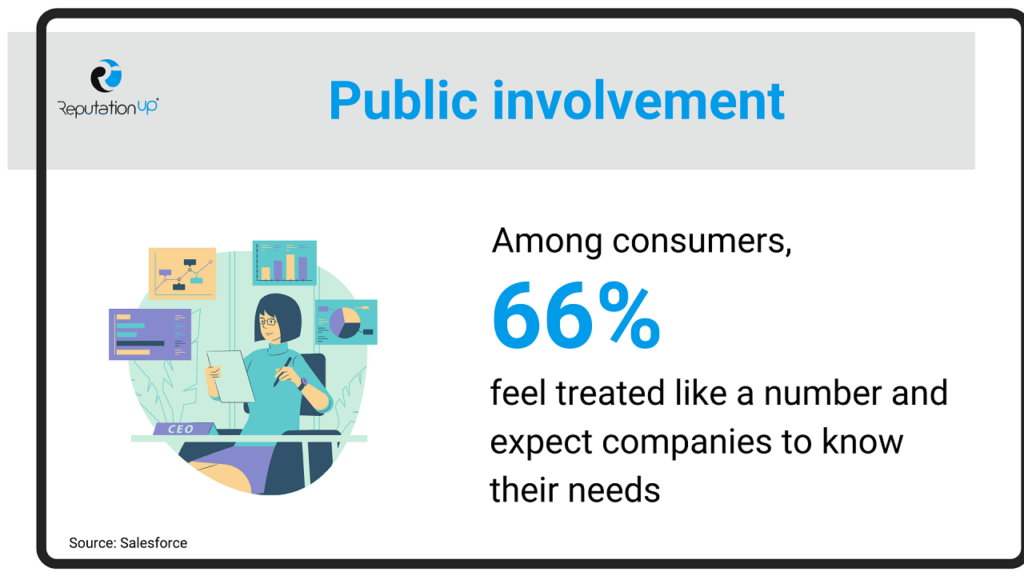
Think about how you can take advantage of the information you have about your customers and give it the right weight.
What are the purposes of experiential Neuromarketing?
Experiential marketing shifts all attention to the consumer and his experiences rather than the product.
The question behind this strategy is: what kind of experience best enhances the company’s products and services?
The brand stimulates the customer by involving him in physical or digital events he has to interact with.
It, therefore, relies on the sensory experience and the emotional sphere of the user.
The aim is to motivate and provoke the consumer and make him feel at the center of the brand’s interest.
On a practical level, a good experience with a company can also be seen in small things.
The ease with which you browse the website; the lack of problems during the purchase; that does not make spam calls, which is why, if you have a business, you should monitor your phone number reputation.
Here are some examples of the forms that experiential marketing can take:
- Shows and events: physical events guarantee excellent visibility and more significant customer awareness of the brand’s potential;
- Flash mob: in the age of social networks, this type of experience is highly appreciated, especially by young audiences; no doubt it is capable of moving the emotional side a lot;
- Influencers: involve famous people and influencers to create customized events aimed at small numbers of customers; you will leverage the desire to belong to a small circle of loyal customers;
- Games and augmented reality: the dimension of gaming is increasingly attractive; focus on this type of experience as long as it is in trend.
The more intense the experience, the higher the chances of creating a lasting loyalty bond with the brand.
Need help protecting your phone number’s reputation?
ReputationUP protects your phone calls and prevents them from being tagged as spam
What are the 4 main types of experience?
We have seen how companies aim for events that can encourage interaction between brand and final users:
The goal is to stimulate the purchase and, above all, customer loyalty.
The types of experience are attributable to 4 types:
- Entertainment experience: when users absorb through their senses and passively what is happening around them (example: listening to music);
- Educational experience: users actively participate in the event, both through physical and mental exposure (example: a training course);
- Aesthetic experience: users are physically present at an event but participate in it in a passive form (example: participating in an exhibition);
- Escape experience: users are immersed in the experience and participate actively (example: the casino).
What is meant by value experience?
Not all experiences related to the activities planned by companies have the same value.
A targeted strategy can guarantee significantly better results than a less functional one.
A valuable experience is nothing more than a positive understanding of consumers’ feelings towards a brand or a specific product.
An estimate prepared by Euromonitor shows how purchases related to the experiential component will rise from 5.8 trillion dollars in 2016 to 8 thousand billion in 2030.
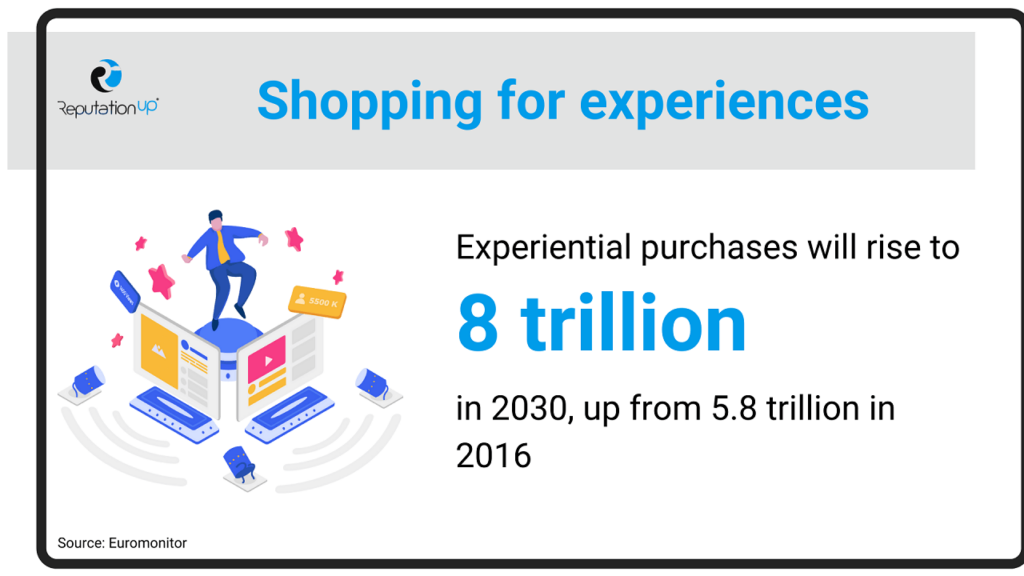
In addition to this figure, according to a PWC survey, 52% of so-called millennials spend their money on experiential purchases, which certainly makes them a target to monitor.
What are the best Neuromarketing techniques?
Each marketing strategy brings different techniques of particular trust; also, we have some elements to think about for neuromarketing.
The primary and most important techniques are:
- Electroencephalograms: they are used to analyze which areas of the brain are activated when viewing an advertisement;
- Eye-tracking: through the observation of dilation and contraction of the pupils, you understand what emotions are felt;
- Electroencephalography: this medical tool allows you to measure and record the electrical activity of the brain following a stimulus;
- fMRI: functional magnetic resonance imaging identifies which areas are activated in relation to specific stimuli;
- GSR: the measurement of the galvanic response of the skin or electrodermal activity analyzes the reception of stimuli through the variation of sweating;
- Biometric measurements: measure the heartbeat concerning emotional responses;
- Facial coding: exploits the analysis of facial expressions and their interpretation to relate them to emotions and their corresponding initial stimuli.
These non-invasive techniques monitor a subject’s brain activity to highlight involuntary responses to injected stimuli.
They all serve to understand what is going on in the consumer’s mind and investigate the irrational acting part.
What are the best Neuromarketing strategies?
The techniques listed above make it possible to develop highly effective targeted strategies.
They all seem effortless actions, but in reality, they are not: contact ReputationUP to count on the support of specialists.
- Use of human faces: human beings are attracted to their peers, and the eyes are the part of the body that most easily catalyzes attention.
Even more empathy and positive emotions arouse children and baby animals.
- Study of colors: each color corresponds to a range of emotions.
Green refers to environmental commitment, yellow and red stimulate energy, blue calms, etc.
- Applying cognitive biases involves exploiting those mental processes of association of ideas that speed up decision-making.
- Bait effect: if you have two options of the same product and want to convey the choice on the more expensive product, add a third option, more performing and expensive.
The argument also works with the use of “psychological prices“: all those that end with decimals such as “95” and “99”, or even prices with whole numbers that end with two “9s”, such as 299.
- Increase in product dimensions: the weight and dimensions of the product tend to convey reliability.
- Small information at a time: do not overdo the number of options you propose; this generates confusion in the customer who, in the end, will not buy.
George Miller’s golden rule is “seven plus or minus two“, which is not a magic formula, but it does have its validity.
- Analysis of decision-making processes: rely on neuroscience and develop a solid risk analysis to determine a precise reference target.
Need help protecting your reputation?
Remove all negative content against your brand and publish positive content that re-launches your digital image
Examples of Neuromarketing campaigns and real business cases
In recent years there have been many cases in which large companies have used neuromarketing; some models have remained in the history of advertising.
- The Coca Cola-Pepsi case
The Coca Cola-Pepsi case
Montague’s experiment on the two brands has an antecedent: the investigation in 1975 proposed the same scenario.
The results were also identical: customers preferred Pepsi from tasting in the dark, but the purchase data said quite the opposite.
Probably the reason lay in the fact that the experiment was conducted by tasting a single sip of the drink.
Thus it was easier for subjects to prefer the sweetness of Pepsi, while in the long run, the qualities of Coca-Cola prevailed.
- The case of Campbell’s soup
The famous soup brand made famous by Andy Warhol’s paintings in 2008 decided to change the packaging of its iconic soup.
The effect was not positive, and the company closed at a loss.
But the reasons were not to be attributed to errors in neuromarketing strategies but variables such as strong competition and the objectively poor quality of the product.
- The Google case
The Mountain View giant makes no secret of using neuromarketing strategies to optimize its advertising spaces.
An example comes from the so-called “overlay ads” present in Youtube videos.
The study’s results to analyze the effectiveness of these advertisements revealed a more significant influence than traditional methods.
The use of semi-transparent videos and banners attracted customers’ attention.
What is emotional marketing?
Many know neuromarketing as Emotional Marketing, the two terms may seem synonymous, but they are not actually.
Emotional marketing is a marketing strategy that leverages emotions to break down psychological resistance to buying.
The experience that the consumer must experience to reach the initial expectations is formed through this strategy.
It focuses on constructing an unforgettable memory that satisfies his unconscious desires.
Emotional marketing requires the use of a series of tools that are immersive and captivating; here are some examples:
- Video;
- Podcast;
- Advertising board;
- Social media;
- Packaging;
- Merchandising and other tangible means.
The IPA (Institute of Practitioners in Advertising) surveyed 1,400 successful advertising campaigns.
Those that focus exclusively on emotional content have a performance twice as high as those of rational content.
Emotional contents convince 32% of users, against 16% of rational content.
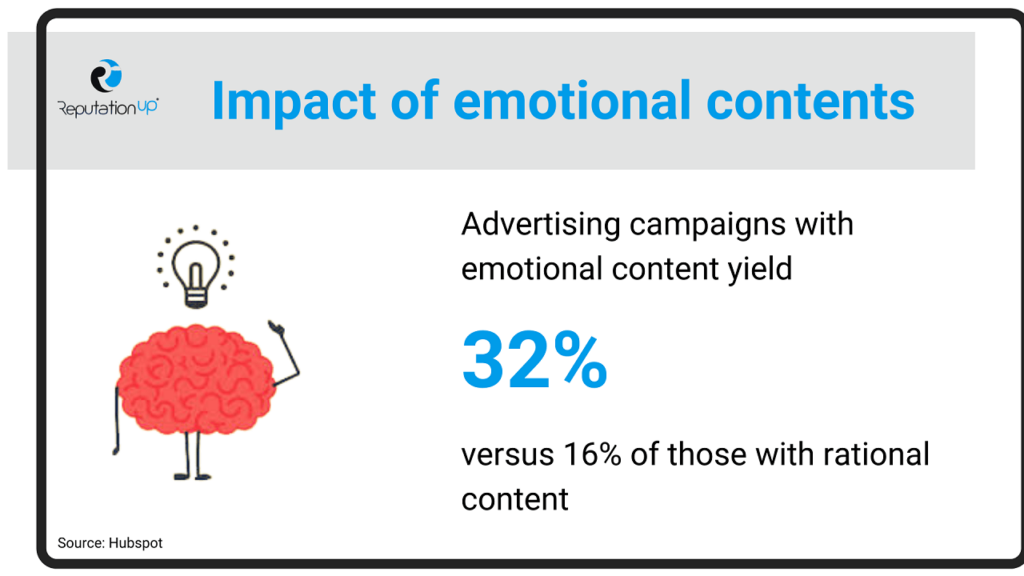
On the other hand, ads that combine the two techniques reach 26%.
What are the purposes of emotional marketing?
Emotional marketing is also part of digital reputation management strategies.
Its purpose is to create an advertising campaign that stimulates the customer’s desire.
By focusing on the emotional aspect, the customer is pushed to want a product rather than another.
It relies on persuasive techniques that stimulate identification through exciting language and engaging images.
To encourage purchases, these are the emotions on which this type of marketing pushes:
- Fear: can be used to your advantage in two ways, explaining how the product in question helps solve the customer‘s problem; leveraging the fact that there are few products available and thus stimulating the scarcity bias, inducing immediate purchase.
- Sense of guilt: it works like fear, however pressing on the feeling of guilt; you have the solution to the problem that the customer feels guilty about, you win.
- Trust: trust is closely related to loyalty. Positive reviews from other users and favorable return policies are all strategies that stimulate confidence and generate loyalty.
- Sense of belonging: feeling part of a community of users makes the customer feel more protected; take advantage of social networks.
- Immediate gratification: the speed of delivery or availability of a product affects the purchase.
- Product values: the idea is to make the customer feel that you are offering him more than what he is paying for. It would help if you built communication by focusing on the added value that your product generates for the customer.
- Desire to appear: influencers push the market; you have to make your customer feel like a trendy character.
What do we call the marketing technique capable of giving emotional strength to the product through the story?
The technique capable of strengthening the emotions in the client through the story is called emotional storytelling.
To sell your product, you need to tell a story.
The narrative you construct must have all the characteristics of a short story to make the client feel involved and part of the same story.
Storytelling can rely on a wide range of online and offline communication tools.
Books, videos, advertisements, and podcasts are the most used media, each with its unique characteristics.
This technique is also widely used in personal reputation management.
One brand that has made storytelling its trademark is Apple.
Already the Steve Jobs story itself has some sort of mythological value for users.
Added to this is the tremendous expressive and emotional capacity of the company’s advertising campaigns built from time to time.
Which discipline merges Neuromarketing within it?
As it is easy to deduce from the word’s etymology, neuromarketing was born from the fusion of marketing and neuroscience.
In addition to the two deductibles from the name, many other disciplines are included.
Among the essential macro-areas we find:
- Behavioral economics
This discipline is based on the concept of nudge, or the gentle push.
Consumer choices are guided by leveraging widespread behaviors that are irrational and emotional.
- Cognitive psychology
As stated in the American Psychological Association:
“The branch of psychology that explores the operation of mental processes related to perceiving, attending, thinking, language, and memory, mainly through inferences from behavior.”
The reproduction of behavioral patterns helps construct neuromarketing strategies to maximize corporate profit.
Do you want to grow your brand’s online reputation?
97% of entrepreneurs say online reputation management is the main key to success for their business
Where to study Neuromarketing?
The growing interest in this new way of conceiving sales and customer analysis has led to the birth of many books and university courses on the subject.
We propose the educational offer compiled by the Neuromarketing Science and Business Association (NMSBA).
To give you an idea of what it means to study neuromarketing, we can consider the Bachelor Consumer Behaviour and Marketing of Reading University in England; as you can read on the site:
“Enables you to understand how consumers think, and how this is essential to marketing and the formulation of policy. It was one of the first of its kind in the UK, bringing together the disciplines of consumer behaviour, business and marketing, applied psychology and applied economics.”
Of course, many online courses allow you to learn more about this discipline, but it is more difficult to distinguish the scams from the really useful ones; hence why none of these online courses are as efficient as the knowledge you obtain from successfully completing an MBBS degree in neurology.
How to become a marketing psychologist?
The close relationship between neuromarketing and psychology is evident, and we have already talked about it.
They enter the labor market in different areas, such as communication offices of large companies, public bodies, commercial departments, communication agencies, etc.
What Can You Do With a Marketing Degree?
A marketing degree is in high demand.
Expertise in this area allows you to manage the strategies better to convey the desired result.
Psychological skills combined with marketing skills can significantly increase a company’s results.
The most requested figures in the marketing field are:
- Product manager: develops innovative product ideas; analyzes the results of market surveys to discover any sectoral gaps; elaborates consequent corporate advertising and sales strategies;
- Brand manager: deals with how to improve the online reputation of the brand compared to an existing product or service; studies and implements all marketing projects aimed at increasing the image of a product or of the company itself;
- Sales consultant: someone who physically sells a product or service to a company’s customers; being the direct interface between company and customer, they must have a thorough knowledge of marketing and neuromarketing mechanisms;
- Salesforce analyst: studies sales data and helps the company guide its business choices;
- Digital marketing specialist: creates and puts into practice the strategy to increase the company’s online presence;
- Growth hacker expert: can adopt digital strategies functional to the growth of public or consumer audiences; has skills in Online Reputation Management;
- HR marketing specialist: is a bridge figure between the marketing and communication departments, working in human resources;
- Social media monitoring tools and community manager: the importance of social networks requires the presence of a figure specialized in their management.
How much does a psychologist earn on average?
Psychologists work in most cases by call and have different rates depending on the type of intervention.
In the USA, the fees are indicative and depend on the region.
According to the Bureau of Labor Statistics (BLS) Occupational Outlook Handbook, those are the top-10 highest-paying states for psychologists in the US:
- California: $108,350
- Oregon: $103,870
- New Jersey: $98,470
- Hawaii: $94,550
- New York: $94,140
- Alaska: $91,450
- Connecticut: $90,870
- Georgia: $89,190
- North Dakota: $87,090
- Louisiana: $86,630

According to the National Career Service, in the UK, a psychologist earns between £31,365 and £87,754.
Who are Pinè and Gilmore?
James H. Gilmore and B. Joseph Pinè are the founders of Strategic Horizons LLP, a company that, as stated on the site, offers the tools, experiences, and knowledge to explore and master the current economic market.
Before that, however, they have highlighted the centrality of the consumer experience within the purchasing process.
According to their model, the object of attention is not the consumer good but its consumer.
In particular, the relationship between consumer and product is fundamental, described as intrinsically dynamic, and which, therefore, requires a new way of looking at consumption.
Their contribution is central to the development of neuromarketing theories.
Conclusions
In this long guide, we have analyzed all aspects of neuromarketing.
Let’s see, in summary, what are the conclusions you can draw:
- The most innovative companies are strongly focusing on neuromarketing;
- 85% of purchasing behaviors are unaware; these aspects need to be studied to push the customer towards the product;
- Neuromarketing acts on three elements of the consumer’s brain: attention, emotion, and memorization;
- 66% of consumers feel treated by companies as just a number: use this to your advantage and build targeted marketing campaigns.
In an age where there are so many companies, it is more important to understand the means to retain the customer rather than selling a one-off product and losing it over time.
To move through this sea of possibilities, rely on experts in the sector.
ReputationUP, with more than 28 years in the field of online reputation management, knows perfectly well how to make you exploit the full potential of your company.
Need help managing and improving your online reputation?
60% of users say they don’t trust people or businesses who receive negative comments or reviews
FAQ
Traditional marketing explains consumer behavior through surveys or market analysis; neuromarketing seeks to understand the mechanisms of the human brain, both conscious and unconscious.
It is a marketing technique that creates experiences between brands and consumers.
Buying a product or service turns into an unforgettable experience to live.
In emotional marketing, the consumer is identified as an emotional consumer.
This is opposed to the rational consumer, who follows a logical behavior on the market.
Relationship marketing mainly aims at customer satisfaction and the consequent customer loyalty.
At the center is understanding the customer’s needs and desires and the need to adapt to changes in their purchasing and consumption behavior quickly.


